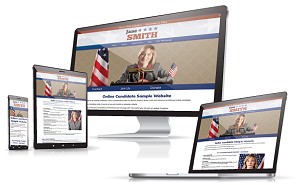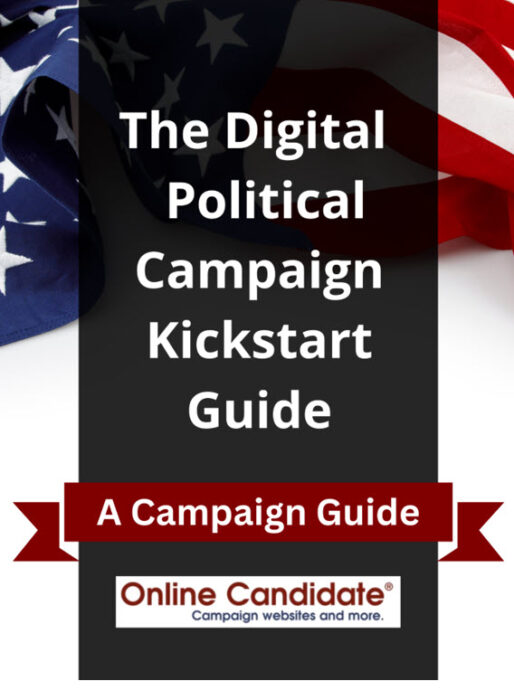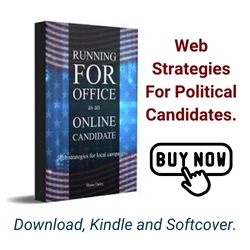Comparing Political Donation Platforms – Our Recommendations
We are often asked by our political website clients (and potential clients) what fundraising services and tools we recommend for their online campaigns. In this article, we’ll walk you through the best political donation platforms, offering a comparison of features, costs, and the pros and cons of partisan vs. non-partisan platforms.
Key Takeaways
- Political donation platforms allow users to donate online to political campaigns, candidates, and causes.
- For political campaigns in 2025, choosing a platform designed for compliance with current regulations and ease of fundraising is crucial.
- Candidates should consider using a donation platform specifically geared for political campaigns to simplify reporting and donor tracking.
- There are both partisan and non-partisan donation platforms, each offering different pricing structures.
- Before accepting online donations, you must first establish a dedicated political campaign bank account.
What is a political donation platform?
Political donation platforms are websites that allow users to donate online to political campaigns, candidates, and causes. If you are running for office, raising money is vital to success and to help you get your message out. Digital campaigning has made it easy to collect donations online.
Although wealthy donors still contribute the majority of donations to political campaigns, small-dollar donors — those who give $200 or less — now account for a significant portion of campaign funds. In fact, small-dollar donors contributed $3.5 billion to federal candidates in 2022 source: Center for Responsive Politics.
These days, political campaigns and nonprofit organizations face many challenges, and choosing the right donation platform is more important than ever. A donation platform can help campaigns of any size raise money both online and offline.
Finding the right donor system for your needs
Nonprofits have historically relied on the personal relationships between staff and donors to develop a successful fundraising strategy. However, technological advances have helped improve this process. A donor database is a powerful tool for fundraising and donor engagement. It helps you store and manage your donors, track donor activity over time, and measure the impact of your fundraising efforts.
For political candidates, we recommend using a service that is specifically geared for political campaigns. This ensures that the platform complies with necessary regulations and reporting requirements.
Features to look for in political fundraising tools:
- A flat-rate pricing structure for easier budgeting.
- No setup fees or monthly maintenance fees, just transaction-based fees.
- Recurring donation options that allow donors to contribute on a regular basis.
- Customizable donation forms with your logo, colors, and branding to maintain consistency across your campaign materials.
- Proper donor information collection, including details like employer, occupation, and citizenship status, to ensure compliance with political fundraising laws.
- Integration with virtual fundraising events to streamline your campaign’s digital strategy.
- Automatic deposits to your campaign bank account.
- Analytics tools to track incoming funds, donors, and trends.
- Tools to simplify state, local, and FEC reporting for transparency and compliance.
Donation platforms for non-profits may be able to handle some of these requirements. But to make life easier on your campaign treasurer, go with a system specifically designed for political donations and reporting.
Partisan vs. Non-Partisan Fundraising Platforms
Your next decision is whether to choose a partisan or non-partisan platform. The main difference here is the platform’s target audience:
- Partisan platforms focus on one political ideology (e.g., Democratic or Republican) and serve campaigns from those political parties.
- Non-partisan platforms are open to campaigns from all political affiliations.
Transaction fees typically range from 2.9%–3.9% + $0.30 per transaction, but this can vary based on the platform and the services included.
Below is a summary and comparison of popular online donation services. They all vary a bit in functionality and pricing, but they are all easy to set up and maintain.
All of these services can be integrated into the Online Candidate content management system. It’s typically done through embedding a donation form or linking out to a branded donation page on the service’s website.
Donation Platforms for Non-Partisan Fundraising
- Anedot – Donation and payment system for non-profits, political campaigns, and causes. Integrates with multiple services.
- RaiseTheMoney.com – Provides campaigns and organizations with a streamlined way to accept online contributions.
- FundHero.io is a fundraising service with built-in Contact Relationship Management system. It has a flat monthly fee in addition to its transaction fees.
Donation Platforms for Partisan Fundraising
- ActBlue.com – The leading fundraising platform for Democratic campaigns.
- WinRed.com – Fundraising platform for Republican, conservative and center-right groups.
Check Terms & Refund Policies Carefully
Especially for partisan platforms, ensure you carefully review their terms of use and refund policies before making a decision.
For state or congressional campaigns, you might need more extensive systems that combine CRM, social media tools, and email marketing features. These integrated services tend to be more expensive. However, many smaller campaigns only need a simple donation platform that integrates with their website, social media, and email.
What do you need to start taking donations online?
To get started, you’ll need a campaign bank account in order to accept funds. You’ll also need an Employer Identification Number, or EIN. In most cases, you’ll need to provide a valid photo ID. Having these items ready will streamline the account creation process.
Review your fundraising platform options before choosing which you will use. After you sign up, your credentials will need to be verified before your donation account is activated. You’ll want to start the signup process early just in case there is a glitch in your account verification. Don’t wait until just before your first fundraiser to start the process.
Related: How Online Political Donations Work
Should you use PayPal for political contributions?
While the fees are low, PayPal lacks many features that political-based donation processors have, including donor information recording, donor management, and social media integration.
While the Online Candidate system supports PayPal by first taking required donor information, it makes the donation a two-step process. While some of our clients today still want to use PayPal, we don’t recommend it.
In this article, we outline the reasons why you don’t want to use PayPal for political campaigns or PACs.
Avoid Non-Political Payment Processors
For the same reasons that we do not recommend PayPal for political donations, we also discourage the use of other business-based payment processing services like Stripe, Venmo, Braintree and WePay. The lack of proper donor data collection and ease of reporting makes it harder for campaigns to comply with political fundraising laws and regulations. If you do go with one these services, it’s likely you’ll need custom programming by a web developer to integrate proper data collection.
Comparing costs between generic and political-specific donation processors
Fees aren’t everything. Just because one vendor charges a higher fee than another doesn’t mean that your campaign will take in less money.
Here’s an example of a local campaign using hypothetical numbers to show how effectively using features can make one platform far more effective than a ‘cheaper’ option.
Suppose one online processor service has a 3% transaction fee. The second has a 6% transaction fee. Which service will leave your campaign with the most money? The first, of course. After all, it takes a smaller bite out of every donation.
Unfortunately, the math isn’t quite that simple…
Say the 3% service is bare bones and allows you to just add a button to your campaign website and a contribution link for your email. Let’s say you bring in $10,000 in donations. After expenses, you are left with $9,700.
Using the 6% service is twice as expensive. It leaves your campaign with $9,300 after deducting costs.
But suppose the higher-cost service has additional tools to facilitate online fundraising. Let us say that besides buttons and email links, the 6% service provides custom contribution pages, social media widgets, and online viral tools. Suppose that extra functionality helps bring in just 10% more in donations.
That extra 10% would provide an additional $1,000, for a total of $11,000. After taking away the 6% fees, you are left with $10,340. That is $1,040 or 11.2% more money in your coffers than the 3% service brought in.
If you can leverage the tools of the 6% service to bring in 20% more, then you could bring in an additional $1,980 or 21% more money.
Keep in mind that the scenario above is just an example, and results can and will vary. Your fundraising success will not only depend on your payment processor, but also how you use your online tools, the size of your campaign, and other factors.
Online fundraising platforms come with bells and whistles for a reason. Plan to use those features to get the most from your efforts.
Which fundraising platform is best for you?
The fundraising system you’ll want to use will depend on your needs and political affiliation.
- If you are appealing to partisan Democratic or Republican donors, then ActBlue or WinRed might be a good choice.
- If you’re looking for a non-partisan solution, you might want to go with Raise The Money or Anedot.
Start your campaign website today and begin accepting contributions online. Still unsure which platform is right for you? Reach out to us for a personalized recommendation based on your campaign’s unique needs.
Related:
The #1 Mistake Killing Your Campaign Website (And How to Fix It)
Would you make a campaign stump speech to a crowd, then stop 90% of the way through, drop the mic, and just walk off the stage?
Would you send a print piece detailing half your campaign on one side but then leave the other side blank?
Of course, you wouldn’t. Yet many campaign websites do just that. You can read all about a candidate’s history and the issues they care about, but if there is no clear call to action to vote, the most critical message is missing.
Instead, you are left to figure it out yourself. Donation and volunteer pages might be there. But the most important information—the MOST important request—is nowhere to be found.
It’s your call to action.
VOTE SMITH FOR MAYOR ON NOVEMBER 8.
 That’s it. That’s the whole point of the campaign. All too many times, the call to action isn’t mentioned on the website. We see this happen far too often, both with local politicians and even some high-profile campaigns.
That’s it. That’s the whole point of the campaign. All too many times, the call to action isn’t mentioned on the website. We see this happen far too often, both with local politicians and even some high-profile campaigns.
In 2016, Jeb Bush’s presidential campaign faced criticism for having a website that lacked a clear voting call to action early on. While the site focused on policy, donations, and endorsements, it didn’t prioritize getting people to the polls. On the other hand, Donald Trump’s campaign homepage consistently featured direct CTAs like ‘Vote for Trump’ and ‘Find Your Polling Place.’ The latter approach reinforced action, while the former missed a key engagement opportunity.
In the 2020 election, Amy McGrath’s campaign against Mitch McConnell struggled with engagement despite raising significant funds. One contributing factor was a website that, while polished, emphasized donations over clear voting CTAs. In contrast, Joe Biden’s 2024 campaign website made it nearly impossible to visit any page without being prompted to register, check voting deadlines, or make a plan to vote.
If you want to massively increase awareness and improve voter turnout, simply tell your readers what you want them to do and when to do it.
Include a call to vote on your site homepage, on squeeze pages, emails, extended blog posts, or whatever online content you control.
Make your call to vote noticeable with either large text, a button, a bright color, or a combination of the three. Just make sure it stands out.
DON’T put conflicting calls to action on one page. Stick to one request only. If it’s a donation page, stick to your donation request. If it’s a volunteer page, that’s your call to action. Otherwise, make your call to action a “Vote for [Candidate] on XXXXXX” declaration.
Never leave anyone hanging or confused. You don’t know what page someone will first see on your site, so TELL them exactly what you want on each and every page.
Always.
Do it as if your next election counts on it. Because it does.
Go check your website right now—does it tell voters to actually vote for you?
Related:
- 5 Critical Pieces of Text Needed in a Campaign Website
- Political SEO Strategies for Campaigns and Candidates
With our affordable political website packages, why wait to start your online campaign? Your domain name, hosting and content platform are all included to make building your online presence as simple and pain-free as possible.
Why Every Political Campaign Needs a Google Account
If you are running for local office, consider creating a Google account for your political campaign. You may already have a personal Gmail account, but creating a new Google account for your campaign will help separate your personal activities. Many candidates create a campaign Gmail account long before they start election activities, so they don’t end up accidentally sharing their personal life with the public.
What does a Google account give you access to?
When you create a Gmail account, it allows you to create a Google account at the same time. A campaign Google account provides you with access to a number of tools, including:
Gmail: Gmail is a free email account with a large storage capacity. You can manage your emails by classifying them under different labels (groups), and you can search within your mailbox. Your Gmail account ties into other Google services seamlessly. Having a central email account keeps communications in a central location.
Google Analytics 4 (GA4): Understanding visitor behavior is the key to a strong campaign website. Google Analytics 4 (GA4) replaced Universal Analytics in 2023 and now provides AI-driven insights into your website traffic, engagement, and conversions. GA4 allows your campaign to track interactions across devices and offers predictive analytics to help you understand donor and volunteer behavior. This user information can help your political SEO efforts.
Google Ads: As your campaign gets going, you can use Google Ads (formerly Google AdWords) to promote your campaign and specifically target voters by location and demographics. However, Google’s political ad policies have changed, and campaigns can no longer target voters based on keywords, interests, or voter data. Instead, targeting is now restricted to location, age, and gender. Display advertising helps you put your message in front of voters, but ad placements are now more restricted within the Google Display Network. Online advertising helps build awareness and can help with your GOTV efforts.
Google Calendar: Use this organizing tool to share your schedule with your campaign staff and contacts. You can integrate your calendar with Gmail and view your schedule from within your mailbox.
YouTube: YouTube is the world’s largest video portal, and it’s free to upload your campaign videos, and then embed those videos right into your campaign website. YouTube has additional verification requirements for political ads and may restrict certain types of election-related content. If your campaign plans to run video ads, you will need to go through YouTube’s political ad verification process.
Google Docs (Now Part of Google Workspace): With this free platform, you can create your own documents, spreadsheets, presentations, and forms that accept user input. You can share these documents with others. Google Docs is now part of Google Workspace, which offers paid options for campaigns that need custom email addresses, enhanced security, and better collaboration tools for staff and volunteers. It’s easier and more secure to work on documents from a central location, rather than relying on email.
Additional tools can also be of use to your campaign, such as Google Search Console (formerly Google Webmaster Tools), Drive, and more.
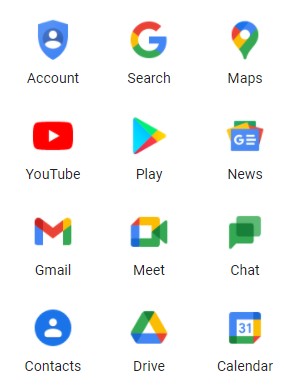
Google apps can be useful for your political campaign.
You’ll need an account to advertise on Google
Google Ads is an advertising platform that enables users to bid for ad placements in search results and across the web. Political candidates and organizations can advertise on Google, but there are now strict limitations on targeting. Campaigns can only target by age, gender, and geographic location. Interest-based targeting, keyword targeting, and custom audience lists are no longer allowed for political ads.
For example, Google maintains an “Ads Transparency Report” that publicly tracks all political ads, including spending, targeting parameters, and ad content. This is to help protect people from election interference and reduce the flow of misinformation. They also ask that all ads related to a particular election include a “paid for by” disclosure and provide budget information.
Campaigns should be aware that their ad spending, creative, and targeting details will be publicly available.
More details on Google’s political ad policies can be found here: https://support.google.com/adspolicy/answer/6014595?hl=en
To do this, your campaign needs to be verified before you can run any ads on Google. The verification process involves submitting government-issued identification, campaign documentation, and disclaimers for transparency. (A similar authorization process exists for Facebook advertising.)
You can create your own Google account at https://accounts.google.com/.
For more help on building your online campaign, check out our book, Running for Office as an Online Candidate – or get all our ebooks in our Combo Package.
Proven Political Campaign Social Media Strategies
Social media has changed the way politicians communicate with voters. Candidates can interact with voters on a more personal level, which helps connect and build trust.
Here are some tips and best practices for using social media in your political campaign.
Start early and start small
While you should build your online presence as early as possible, you’ll want to start small with social media. Make sure you choose a good handle for your social media platforms. It should be short, memorable, and reflective of your political brand. This is important for your political marketing and media efforts.
Signing up for Twitter, Facebook, Instagram, and every other social network you can find is a recipe for disaster. Focus initially on platforms where your target audience is most active. This targeted approach ensures your message resonates more effectively.
It’s best to focus on a few key platforms so you can build a dedicated audience for your political message. As you get more comfortable with your initial platforms, consider expanding to additional platforms and exploring various political social networks to broaden your reach.
How to run a political campaign on social media
Navigating social media platforms is like moving through different countries. Each has its own culture and language. For Facebook, think community and conversation. It’s where you share the stories behind your campaign. Use Facebook Groups to foster a sense of belonging among your supporters.
Twitter is great for real-time updates. It’s perfect for quick, impactful messages on anything that’s trending. Use hashtags wisely. They can extend your reach far beyond just your followers.
Instagram is all about the visual story. Here, your campaign comes to life through images and videos. Stories and Reels are great tools to share behind-the-scenes content and quick updates.
LinkedIn is your professional megaphone. Share your achievements and policy proposals. It’s where you connect with industry leaders and potential donors on a professional level.
TikTok offers a stage for creativity. You can show the lighter side of your campaign. Use it to tap into the younger demographic with short, engaging videos.
Verify your campaign for advertising
Political campaigns can benefit from a variety of features that Facebook offers. However, many political candidates make the mistake of using Facebook as if it were a personal account and neglect the power of advertising on the platform.
There are various types of Facebook ads to choose from when promoting your political message. You promote your message through an ad on a user’s timeline or in a sponsored post that will show up in their newsfeed.
Facebook requires verification if you want to run political advertising through the platform. Being authorized means that others can see your ads and your ad budget for your account. Even if you do not plan on running any advertising, it’s a good idea to verify yourself for future opportunities.

Use video to engage the public
Creating video today is easier than ever. Videos, especially live streams, are effective for addressing local issues and engaging directly with constituents. Anyone with a smart phone can record and even edit video on the go. Live streaming is more popular than ever through services like Facebook Live.
Incorporate live Q&A sessions and use storytelling through your videos to deepen the connection with your audience. Live streaming can be a great way for candidates to address local issues. Besides the Facebook Live platform, Tiktok is becoming increasingly popular with voters. You can use these platforms to provide insight on issues and connect with citizens.
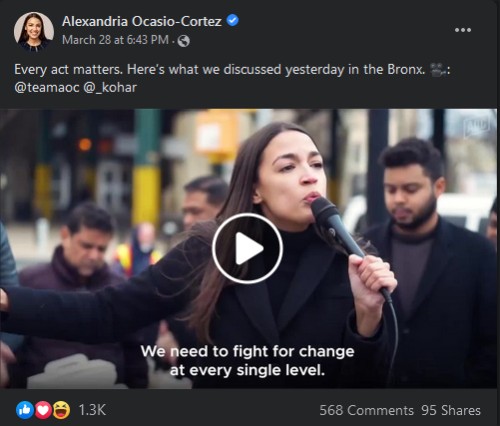
Create visual content for more attention
Visual content, such as infographics, charts, and text-based memes, are more likely to be shared than text-based posts. They also have the potential for more visual engagement because they are simple to understand.
Utilize visual content to break down complex campaign issues or policies into easily digestible pieces. See what other campaigns are doing for examples and incorporate those best practices into your own strategy.
There are many types of visual content. Infographics are a popular format that brands use on social media. Infographics are a popular format to communicate complex political messages. An effective infographic should be informative and visually appealing. They can be shared on social media, embedded in a web page, or copied into an email with ease.
- Good visuals should be part of your overall content strategy. Online tools such as Canva make it easy to create these types of graphics.
Embrace Content Variety
A mix of content types will keep your audience engaged.
Videos: A compelling video can turn complex ideas into engaging stories. It makes your message accessible and shareable. Perfect for when you want to explain policies or share campaign updates. Facebook loves community-driven stories, while Instagram Stories and Reels are perfect for quick, visual snapshots.
Images: They say a picture is worth a thousand words. Use images to capture the essence of your campaign. They grab attention quickly and can stir emotions, driving your message home. Use X / Twitter for impactful, moment-driven photos that highlight campaign milestones. Instagram is your canvas for visually rich, story-telling images.
Text Posts: Sometimes, you just need to say it in words. Text posts give you the space to dive deep. Share your thoughts, stories, or detailed updates. They’re great for building a personal connection with your followers. Facebook is great for longer, narrative-driven updates. LinkedIn suits professional insights and achievements, connecting you with industry leaders.
Polls and Surveys: Get interactive. Polls are not just fun; they make your followers feel heard. Plus, you get insights into your audience. But don’t rely on online polls to set your policies!
Infographics: Tackle the tough topics. Infographics combine data and design to simplify complex information. They’re eye-catching and easy to digest, making them perfect for sharing. Whether it’s a detailed policy plan or campaign impact, infographics work well on Facebook, Twitter, and LinkedIn.
Now, get creative and watch your engagement levels soar.
Analytics and optimization
Diving into analytics isn’t just for data geeks. It’s your roadmap to understanding what resonates with your audience. Start with the basics. Look at likes, shares, comments, and views. These metrics give you a quick snapshot of your content’s performance.
Go deeper with engagement rates and click-through rates. These numbers tell you how compelling your content is. Are people just looking, or are they taking action? For example, if a video on Instagram sparks more interaction than usual, consider making it a regular feature.
Don’t forget about follower growth. It’s a slow climb, but it’s worth watching. A sudden spike or drop can tell you a lot about what works and what doesn’t.
Use this data to tweak your strategy. Test different types of content and posting times. See what changes make a difference. Remember, what works on one platform might not work on another. Tailor your approach accordingly.
Set clear goals. Maybe you want to increase engagement by 10% or grow your followers by a certain number. Use analytics to track your progress. Adjust your strategy as you learn what drives your audience to action.
By incorporating these strategies into your campaign, you’re not just speaking. You’re listening. And that’s how you connect with voters on a deeper level.
Add widgets to promote your content
Put social network widgets on your campaign website to highlight your latest posts. Embedding social media feeds directly on your site keeps your content fresh and encourages visitors to connect with you on various platforms. The best place to attract new social followers is through your own site. Consider adding links to your website and social media accounts to your email signature.
Facebook social media widgets can be added to your Online Candidate website. Look under the Tools and Widgets section in your site admin.
Use social to fuel your political fundraising
Social media has become a crucial fundraising tool for political candidates. Facebook ads, in particular, have been instrumental in digital fundraising efforts.
Through the Facebook Ad Library, anyone can search and see what other campaigns are spending on the platform. The Ad Library shows information about the date, time, target audience, budget, and more for any given political ad. Leverage insights from the Ad Library to craft compelling ad campaigns that stand out and drive donations.
You can also use this tool to see how much your competitors are spending on Facebook ads.
Take advantage of the ‘pinned post’ spot to promote your donation page. Strategically use social media posts to highlight the impact of donations and showcase what contributions have enabled your campaign to achieve. You can request donations through your posts, but no one wants to see endless requests for money. Make sure your fundraising efforts are just part of your overall news and updates.
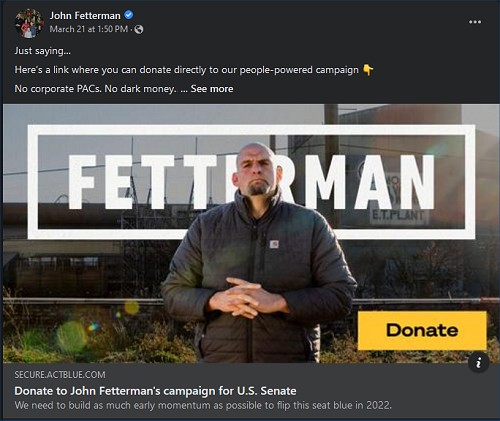
Many candidates use Facebook to directly raise money for their campaigns.
Don’t go it alone
Partner with influential people and organizations that share your political positions. Engaging with local influencers and community leaders can amplify your message and bring credibility to your campaign. They can share your posts with their own followers. This can help your message reach a wider audience. In addition, don’t overlook your own followers, and be sure to ask them to share specific content as well.
Don’t feed the trolls
Unfortunately, trolling and harassment are common on social media. It is inevitable that your posts will be critiqued and commented on. Maintain a positive and professional demeanor in all interactions, focusing on constructive dialogue. Trolls exist everywhere, from web forums to social media. Political content is a prime target. The best you can do is to not feed into their harassment and negativity. Most people’s instinct will be to fight fire with fire.
Under the First Amendment, the government cannot restrict people from speaking publicly. This means that public officials cannot block people on social media. There has been debate about whether this tactic is ethical or legal, as social media is considered a public forum.
- To deal with trolls, have supporters report inappropriate posts. In other cases, try to move discussions to direct or private messages.
- Keep in mind that anything you say, private or not, can be captured and reposted elsewhere.
- Try to be kind and respectful to those who disagree, even when it’s difficult.
Don’t sweat the numbers
“The journey of a million followers begins with the first like.” Sure, it’s great to have a high number of followers, but it’s better to have a smaller number of interested ones. More than a few politicians have artificially boosted their follower numbers. It’s not that hard to do. In the end, though, “bots” don’t vote – only people do.
Most candidates today use social media as a tool for political campaigning. They use it to generate awareness, promote it, and persuade voters. Social media can help politicians connect with people who may not be interested in politics but might become interested if they know what the candidate has to say about certain topics or issues.
Have you considered using social media yet? How are you currently reaching voters where they are discussing your local issues? Start today and explore how to engage them across those channels, using the strategies outlined above to maximize your impact.
FAQ
Q: How often should I post on different platforms?
A: Frequency matters, but consistency is key. Aim for daily posts on platforms like Twitter and Instagram. For Facebook and TikTok, a few times a week can keep engagement high without overwhelming your audience.
Q: How can I make my social media ads more effective?
A: Tailor your ads to your audience. Use the insights from Facebook’s Ad Library to see what works. Test different messages and visuals. Refine based on performance.
Q: What’s the best way to handle negative comments?
A: Stay positive and focused on your campaign’s message. Engage constructively where possible. Encourage supporters to report any inappropriate content.
Q: Can social media really impact fundraising?
A: Absolutely. A well-crafted call to action on social media can inspire supporters to donate. Highlight how their contributions make a difference. Make it easy for them to contribute with clear links and simple donation processes.
For more campaign tips and strategies, check out our book, Running for Office as an Online Candidate.
7 Ways to Ruin Your Campaign’s Website
Campaign websites are important for candidates to communicate with voters and spread their message. But there are many ways a website can go wrong and turn off voters. Here are some common mistakes that can make a campaign website lose credibility. Some of these topics have been elaborated in other posts, but they bear repeating again.
Mistakes to avoid on your campaign website
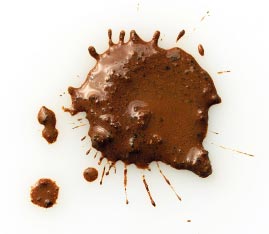 Lack of Content: The time when your campaign launches is not the time to start putting together your campaign website. Your site should have enough initial content to inform voters about the candidate and important issues before it launches. You only have one chance to make a first impression. If your website is in bad shape when they first find you, then you’ve made a bad first impression. That’s not good.
Lack of Content: The time when your campaign launches is not the time to start putting together your campaign website. Your site should have enough initial content to inform voters about the candidate and important issues before it launches. You only have one chance to make a first impression. If your website is in bad shape when they first find you, then you’ve made a bad first impression. That’s not good.
Bad Grammar and Spelling: Bad writing is a personal pet peeve. If a candidate cannot spell properly in their campaign literature, why should I expect more from them in office? It’s like a resume with errors – they are the first candidates who get weeded out of the process. Don’t forget to proofread, and have others check any material before it is made public.
Missing an Online Donation Method: Politicians of all types use the web to raise funds. If you are not accepting online donations, then you are missing out on an important campaigning tool. Adding a donation platform is easier than you think. Start this process early, so donation options can be integrated into your website before you launch it.
Not Mentioning Election Day: This is a common problem; the most important call to action is missing – the day of the election. That date should be prominent throughout your site. A good place is at the bottom of each page and prominently on the home page. Your Election Day notification should include the day of the week and the year. Unless your election is held in November, you are going to have to really work to get supporters to the polls. Don’t keep that date a secret!
Leaving Out the Location: Don’t assume everyone knows where you are located. Be sure to include your state and district throughout your website copy. This will help your site to be ranked when voters search a candidate’s name in the search engines.
Weird Stuff: This is a subjective element, but a poorly designed website does not do much to help a candidate. Bad colors, multiple fonts and inconsistent layouts can distract from your message. You can also lump in poor practices such as using overly large image files that slow load times. When laying out copy, keep it simple. Add descriptive headers and limit the amount of text your bold or italicize. Avoid multiple colors, too many fonts, and for goodness’ sake, AVOID USING ALL CAPS.
Online and Offline Inconsistency: Consistency of message and consistency of presentation are important in a campaign. When campaign elements do not match, it can be confusing to voters. A candidate’s website design should match the color scheme and logo of your print materials and signage. It’s all about branding a candidate and message. For the custom political websites that we design, we can provide a high-resolution logo graphic for use in print and signage.
The number one mistake people make when launching a website is not having a plan. A candidate might not know what they want to do with their site, so they just start throwing things up. On the other hand, if you have a campaign platform and solid candidate biography written, then it’s much easier to get your site built.
Why reinvent the wheel? We make our custom website setup process simple by including easy-to-use questionnaires and preset pages. If you are looking for content ideas, we have sample copy on our resources site for clients to use.
Ready to start your campaign website? Learn how Online Candidate can give your campaign the winning edge!
Developing Strong Messaging for Your Political Campaign
In any political campaign, the goal is to persuade the public to vote for the candidate by delivering a persuasive message. For example, campaign websites serve as a central hub for communication, allowing candidates to convey their messaging effectively to a wide audience.
Developing effective political messaging can mean the difference between victory and defeat. A solid strategy helps shape the way voters see a candidate and their candidacy. Organize your website content to align with campaign messaging, particularly on your issues pages. This ensures that key messages are prominently featured and accessible to voters.
Essentials of Political Messaging Strategy
- A clear and concise message should always be the focus.
- A political candidate’s personal history can be a meaningful way to connect with voters.
- Genuine and consistent campaign messaging is most effective.
- Communicate with a strong and authentic voice.
- Create an elevator speech for your introduction to the voting public.
A core political message is the central point that a politician or party wants to get across to their supporters. This message is often about a vision for the future, patriotism and/or unity. Core messages should be woven into all aspects of your campaign – from speeches, press releases, bumper stickers, text messages, and your website.
Policy-based messages promote an idea or cause by describing it in detail. Character-based messages focus on a person’s qualities and their suitability for office. Values-related messaging relates to whether a policy is in the best interest to society. (Sometimes value platforms can be more persuasive than policy platforms.)
Crafting a Clear and Persuasive Political Message
As you develop a platform for your campaign, it’s important to know what you plan to say on your website, marketing materials, and through social media. Strong, focused communication that stays on point allows voters to easily understand your values and how you’ll work to improve their lives.
Successful political communication strategies include three crucial elements:
- It is clear and concise: Whether it’s a stump speech, article or tweet, a clear and concise message should always be the focus. Political campaign websites play a key role in ensuring clarity and consistency across all communication channels.
- It has an effective messenger: Whether you are running for congress or city council, the person delivering your message is as critical as the message itself. Good candidates listen to and build strong relationships with those they represent. They communicate with a strong and authentic voice.
- It includes a strong call to action: The most successful political campaigns have strong calls to action. One example of a call to action is the famous Reagan phrase, “It’s morning again in America.” Campaigns that inspire are more likely to win because they leave an impact with voters.
State short and state clear goals to hook voters. Voters will hear from any number of campaign sources: a candidate, campaign staff, external experts, or even volunteers. The more genuine and consistent the message is to the audience – be young millennials or older voters – the more likely that message will resonate and be effective.
Narrative Building in Political Campaigns
A narrative that embraces emotional storytelling is essential to any successful political campaign. An interesting narrative engages people and makes them feel something for your cause. This helps them feel as if they are invested in the outcome. Many candidates do this by using words like “together” and “us.”
Emphasize why it’s good for them support you and not your opponent.
When crafting a compelling story, the narrative needs to be built around a vision and mission for the future. Rallying around a specific issue is often used to develop an emotional connection.
Finally, tie it all together with language that inspires supporters and encourages them to act.
For example, suppose a candidate is passionate about education reform. Their narrative could spring from their own journey as a teacher. They’d talk about specific classroom challenges and how their educational solutions would improve student success. A story must do more than just outline policies. It has to connect emotionally with voters. In this case, the candidate would show the importance of education reform and how fits into a larger vision These types of narratives makes policy statements more personal and powerful.

Put together a good stump speech, elevator speech, and slogan as the cornerstones of your messaging.
Personal Stories: A Powerful Messaging Tool
Do you have a personal story or experience that can resonate with voters? A political candidate’s personal history can be a meaningful way to connect with people and help them relate to your platform.
For example, if you were born poor, you could describe your experiences and hardship. They could be the reason why you want to make things better for others.
Personal stories make great material for a political stump speech. A good stump speech is used throughout the election season. While it can vary in length, it is the most important speech that a candidate makes. It is told at fundraising events, rallies and when introducing themselves to groups of voters. A stump speech can be serious or humorous, but it should always keep the audience entertained.
Here an example of short stump speech:
“I grew up in a family where ends barely met. My high school diploma was more than an achievement; it was a lifeline to success. I’ve known the weight of poverty and the strength it demands. Now, as a candidate for county legislator, I’m going to fight for families like mine. My education came from life’s challenges, and it’s those lessons I’ll bring to the legislature.”
Authenticity and Consistency in Political Communications
Voters are good at detecting verbal posturing from politicians and political candidates. Saying one thing to one group of voters and something else to another will fool no one these days. The constant stream of footage and posts makes the truth much harder to conceal in the age of social media.
Inspiring or compassionate messages are most effective when they are authentic and consistent.
Populist messages are often used in political campaigns because they are easy to understand and can mobilize people. For them to be effective, they must be empathetic and inspiring.
Grassroots political campaigns mobilize and engage people who might not otherwise get involved in politics. They give people the power to make change happen. Grassroots messaging is often different from that of a large-scale campaign. For example, the narratives described will be shorter, more direct, and more emotional.
Your strategy may be influenced by the strengths and weaknesses of you and your opponents. It may also center around an issue or particular theme. You may want to highlight your own strengths such as experience or skill in that area. If your opponent is an incumbent or has a particular strength, highlighting their weaknesses could be more effective.
The Art of the Elevator Speech in Politics
An elevator speech is a short summary of who you are and what you do. Your elevator speech is the one-minute (or less) speech that you tell people who may ask, “What are you running for?” or “Why are you running for office?”
Giving stump speech is fine if you have the time. But you still need to be able to summarize yourself in a way that is concise, memorable, and compelling.
Here’s how to write a concise and impactful elevator speech.
- Introduction: Start with a brief introduction of who you are and your role or position. (doctor, lawyer, teacher).UN
- Core Message: Explain briefly why you are running for office and what you want to do if elected.
- Unique Selling Point: Tell voters why they should vote for you instead of your opponents.
- Memorable Conclusion: Offer a conclusion that is short but memorable (e.g., “I’m not a politician; I’m just a concerned citizen.”)
- Brevity is Key: Ensure the speech can be delivered in under a minute.
Your elevator speech is often your introduction to the voting public. It’s important that it makes a good impression. Take the time to come up with, write out, and refine your speech until you and your staff know it by heart.
Here’s a sample elevator speech for a candidate running for city council:
“Hello, I’m Alex Johnson, a dedicated community volunteer and small business owner. I’m running for city council to bring practical solutions and fresh energy to our local government. My focus is on improving public safety, supporting local businesses, and enhancing our public parks. What drives me is not just policy, but people. I’m here to listen, engage, and act. Imagine a city where every voice matters, where progress blooms from our shared ideas. With your support, we can turn this vision into our reality. I’m Alex Johnson, and I’m ready to lead us into a brighter, united future.”
Practice delivering your elevator speech to make it sound natural and engaging. You’ll need to because it will be repeated over and over until Election Day.
Creating Memorable Political Campaign Slogans
The next step is to strip down your overall message and create a memorable slogan for your campaign. Your slogan provides a first impression to voters as it is used in your advertising media, on everything from billboards or bumper stickers.
Your slogan should be short, simple, and catchy so that it can be easily remembered by voters. They sometimes use rhyming, alliteration, a play on words, or repetition. It doesn’t need to be overly clever or creative as long as it resonates with the audience.
For example, Obama’s 2008 “Yes We Can” campaign slogan was popular from the start. That slogan was simple and resonated with a large segment of the voting public. Other examples of clear and concise slogans are “Morning Again in America,” “I Like Ike,” or “All the Way with LBJ.”
When creating your slogan, think about the overarching goal of your campaign. This goal can be something that impacts or affects all members of the community. It can be an issue, event or even a personality trait that can help voters decide who they will cast their vote for.
Conclusion: Put together your winning message today
Campaigns are about getting your message out to the voters. They are also about staying on message. It’s important for campaigns to be authentic and not just chase what is popular at the moment.
Here is a list of some tips for staying on message:
- Make sure your messaging is active, concise, and clear.
- Use the same voice across all media channels.
- Repeat it over and over again.
- Give people something to do after they hear your message.
- Keep consistent and stay on message to get the word out.
Winning candidates create a solid communication strategy that resonates with voters. Start creating yours today!
Want to learn more? Sign up to our newsletter below for free digital campaigning tips and resources.










